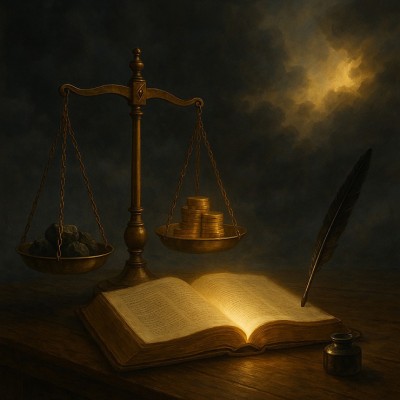
I. OPINION OF THE RAMBAM
A. Pro or Against
The Rambam's opinion on visiting graves, particularly those of tzaddikim, is nuanced and has been subject to various interpretations. The Rambam (Laws of Mourning 4:4) writes, וְלֹא יִפְנֶה אָדָם לְבַקֵּר הַקְּבָרוֹת, which means that a person should not feel the need to visit cemeteries. According to the Radbaz, the Rambam’s prohibition of "לבקר הקברות" refers primarily to the pagan custom of opening graves to commune with the dead, not to ordinary visits from outside the grave, such as honoring the deceased or praying near the tomb.
The Rivash, (Siman 421) through textual comparison and contextual reading, explains that the Rambam forbids turning one’s attention toward cemeteries in the sense of constructing elaborate monuments, as the true legacy of the deceased lies in their good deeds and teachings. Therefore, one should focus less on physical structures and more on emulating their actions.
B. Descendants of The Rambam
Rav David Yosef, in his article published in Hama’ayan (Issue 251, Tishrei 5785 [65:1]), explains that despite the Rambam's seemingly restrictive stance on visiting graves, there is ample evidence suggesting that his descendants, and possibly the Rambam himself, engaged in the practice of visiting the graves of tzaddikim.
Rabbi Avraham ben HaRambam, the Rambam's son, writes in his commentary on the Torah1 that the mention of Devorah's burial place in the Torah indicates that people would visit her grave because of her great righteousness, in order to receive blessing there. He also expressed a desire to undertake a "Ziyara to the lands," which is understood to mean visiting the graves of the tzaddikim, likely referring to sites in the Land of Israel.
There is also an attributed letter2 stating that the Rambam himself visited Hebron upon entering the Land of Israel, describing how he went to “kiss the graves of my fathers in the cave,” referring to the Cave of Machpelah. This suggests that he did not view visiting the graves of tzaddikim as inherently problematic.
The Rambam's grandson, Rabbi David HaNagid I, is also reported to have prayed at the cave of Hillel and Shammai in Meron3 during times of persecution, showing that he considered such acts both permissible and meritorious. Similarly, Rabbi David HaNagid II, a great-grandson of the Rambam, wrote a letter to the Jewish communities of Egypt promising to pray for them and their families in holy places and at “great and esteemed places of visitation (Al-Mazaraat).”4
Rav David Yosef concludes that there are testimonies from the Rambam’s descendants who practiced “Ziyara,” and it has been clarified that this custom does not involve asking the dead to save them or to pray on their behalf. Its purpose is to receive blessing from the Divine presence that rests at the grave of the tzaddik, and through the merit of this blessing, one’s prayers at the grave are more readily accepted.
1 Bereshit 35:8
ותמת דבורה – סיפור התורה לזה מורה אל גודל צדקותה, ואפשר שהיו מבקרים את קברה ומתברכים שם, כמו שנשי ישראל היו נקראות על שמה לברכה [כמו שמצאנו] (שופטים ד, ד) “ודבורה אשה נביאה
2 איגרות הרמב”ם מהד’ שילת עמ’ רכה
ובאחד בשבת תשעה לחודש, יצאתי מירושלם לחברון לנשק קברי אבותי במערה
3 ספר יוחסין השלם (עמ' 219)
והיה הנגיד ר' דוד מתפלל במערת הלל ושמאי ויצאו מים קרים
4 מנחה ליהודה (ירושלים תש"י, עמ' 175)
אנחנו לא נשכח את ידידותכם ואהבתכם לעולם, גם אם תשכחוהו אתם, אנחנו לא נשכחכם מלהתפלל ולבקש מאת ה’ יתעלה במקומות הקדושים ובמקומות הביקור (במקור הערבי אלמזאראת) הגדולים הנכבדים על הצלחת ענייניכם וחיי ילדיכם
By R’ Nissan Shalomayev
Is it Encouraged to Visit the Graves of Tzaddikim
Typography
- Smaller Small Medium Big Bigger
- Default Helvetica Segoe Georgia Times
- Reading Mode




